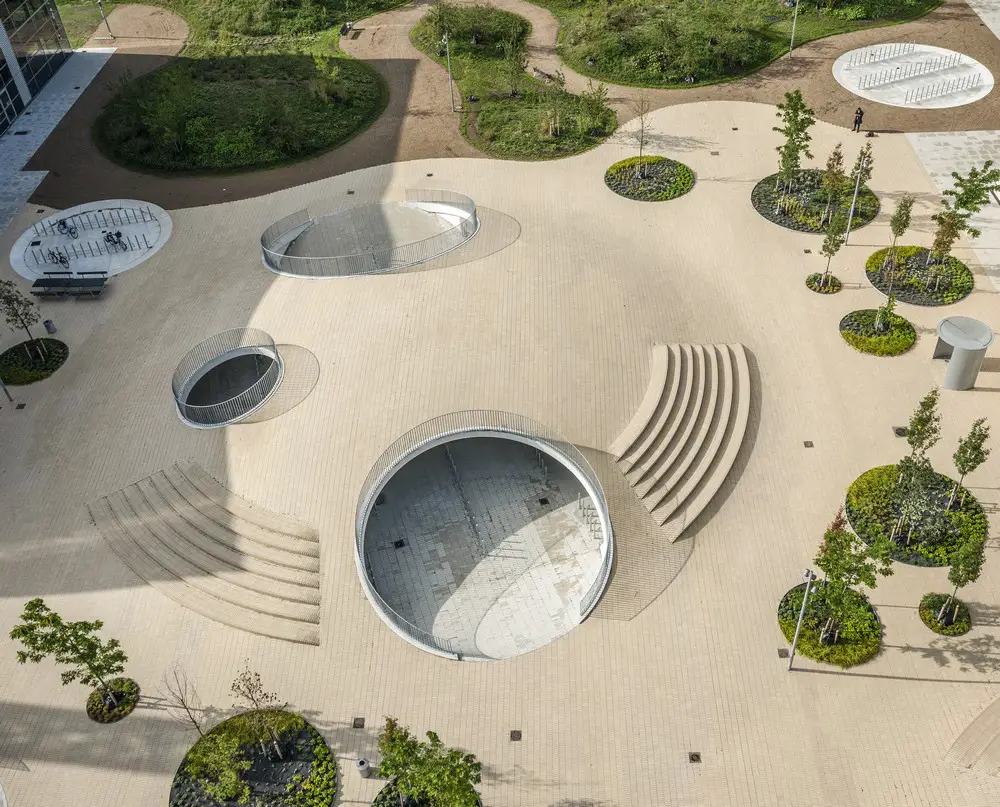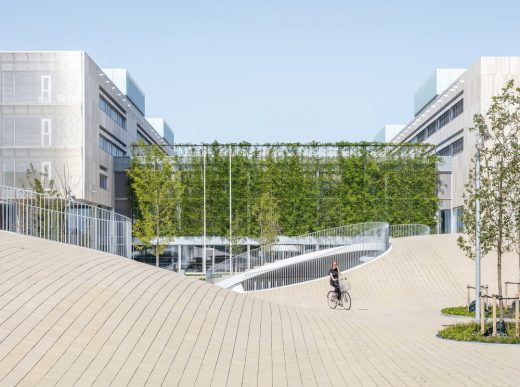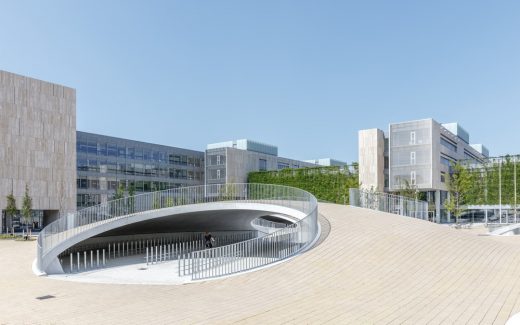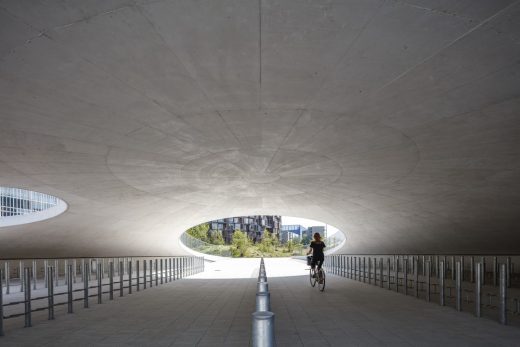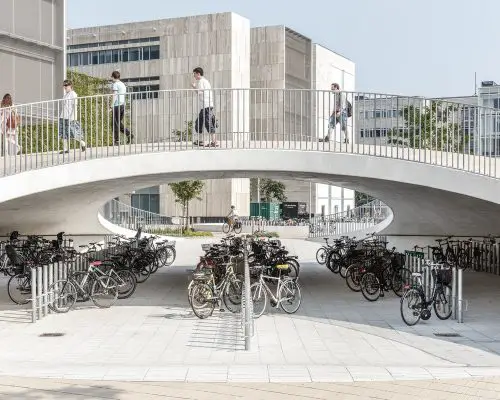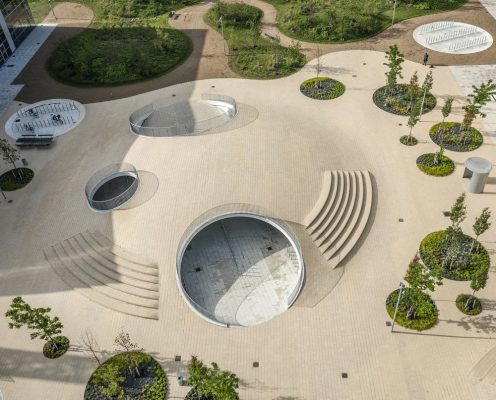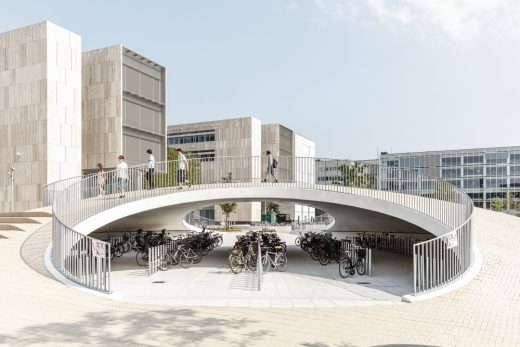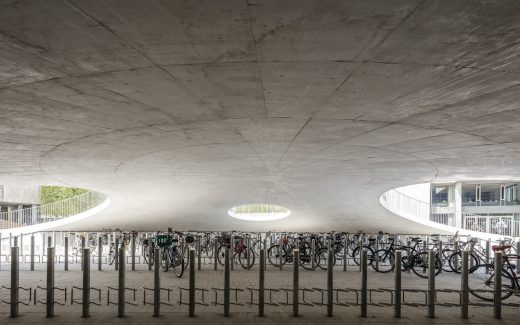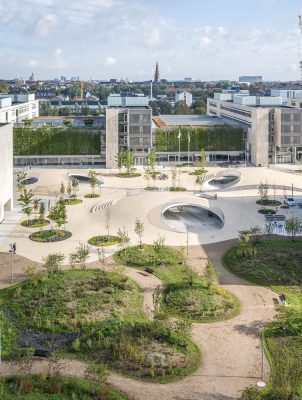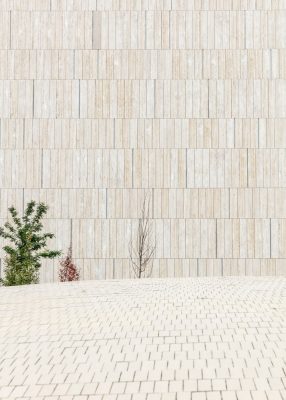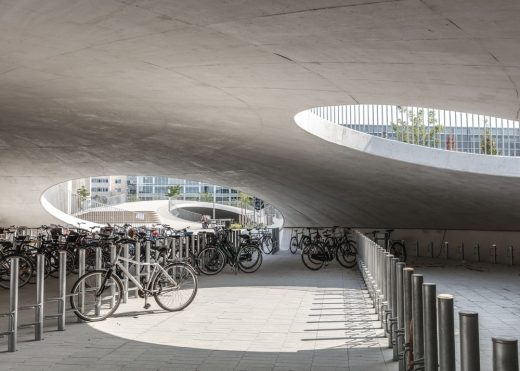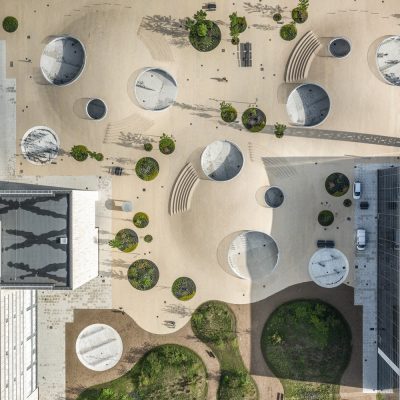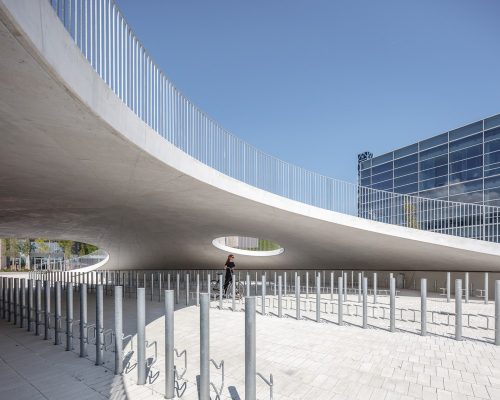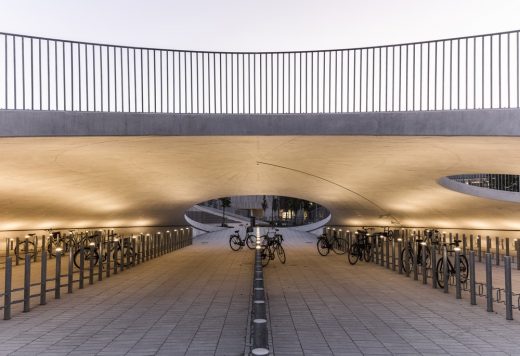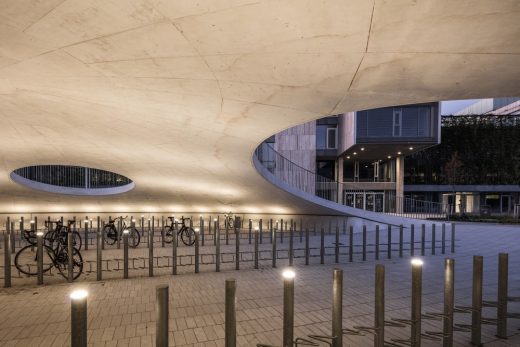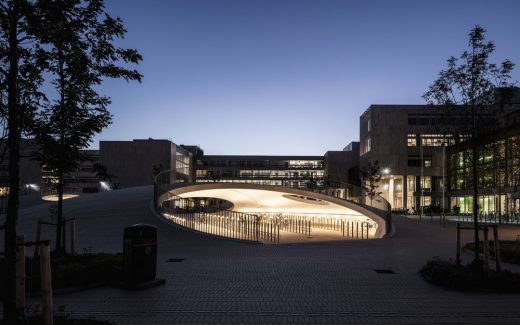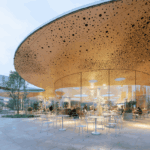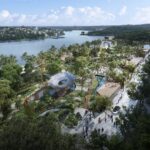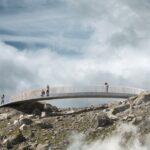Karen Blixens Plads, Copenhagen Landscape Design Project, Danish Public Architecture Images
Karen Blixens Plads in Copenhagen
Architectural City Landscape Project on Sjælland, Denmark – design by COBE
9 Jun 2020
Karen Blixens Plads
Architects: COBE
Location: Copenhagen, Denmark
Late August was the official opening of a new, major square in Copenhagen: Karen Blixens Plads. The square has a unique undulating landscape with hollow hills and low bicyclebeds creating a new and innovative way to park bicycles. It is one of the largest public spaces in Copenhagen and has room for more than 2,000 parked bicycles. COBE, under Dan Stubbergaard’s leadership, created the design in close collaboration with EKJ Consulting Engineers.
At more than 20,000 sqm Karen Blixens Plads is one of the largest public squares in Copenhagen. Situated between the University of Copenhagen and the Danish Royal Library’s buildings at the university’s South Campus, the open and welcoming urban space is an innovative, spectacular and multi-functional architectural design that accommodates and promotes green transportation, climate change adaptation and biodiversity. The project was supported by a generous donation from the private foundation A.P Møller Fonden.
Innovative bicycle parking The combined public square and university plaza is designed as a carpet that covers an undulating terrain of small hills and breaks the large space up into smaller zones with room for activities both on and inside the hills (domes). The three bicycle hills were created as cast concrete shells clad with hand-laid tiles in colors echoing the exteriors of the surrounding university buildings.
In addition to serving as an active meeting place for students, employees and locals, the square also contains a high-capacity bicycle parking space for the many users of the university, including 16,000 students and 2,000 employees. The innovative and unique design has room for 2,000 bicycles.
‘Copenhagen is one of the world’s leading bicycle cities, with more than 40 per cent of the city’s inhabitants riding their bike for their daily commute. That requires a new and flexible approach to bicycle parking. In previous projects we have developed innovative bicycle parking solutions that form a natural element in the environment. By Nørreport Station, for example, we created the socalled bicycle beds, and here, at Karen Blixen Plads, the solution is bicycle hills. The integrated hilly landscape creates a space with a large capacity for bicycles, two-thirds of them in covered spaces inside the bicycle hills,’ says Dan Stubbergaard, architect and founder of COBE.
Interdisciplinary collaboration In collaboration with CN3, COBE and EKJ’s construction engineers calculated and created 3D projections of the iconic concrete dome constructions. The solution is based on a shell construction as the load-bearing structure. Aesthetically, the design provides a large airy space underneath the domes. However, while a shell construction does not normally have holes in it, these domes have large openings, which constituted a significant challenge and required additional statistical analyses.
Green profile In a soft transition, Karen Blixens Plads brings together the university’s need for urban spaces with the open landscape of the neighboring Amager Fælled (Amager Commons). The north side of the square, where the three main entrances to the university are located, is an open and multipurpose space. To the south, hilly, undulating meadowland connects the campus with the commons. In addition to bringing nature into the campus the landscape also contributes to climate change adaptation by adding a capacity to handle stormwater.
Delaying rainwater in depressions in the landscape utilizes the recreational values of the water and creates small wet biotopes that support biodiversity, enable rainwater evaporation and supplements the canal in case of extreme precipitation, thus contributing to climate change adaptation. The design uses simple, sturdy and durable materials, just as lighting and furnishings are kept to a few, simple elements to ensure a sustainable urban space. All the selected elements are low-maintenance and contribute to the square’s green profile.
Outdoor auditorium A central feature is an outdoor auditorium with seating for up to 1,000 people on the manmade hills. The hilltops offer additional standing room for concerts or other large public events.
‘All in all, we have created a unique space based on three main principles: improving the connection between landscape and urban space, integrating optimal green spaces with a large capacity for bicycle parking and creating a space that offers good social meeting places and learning environments. The almost cathedral-like form of the bicycle hills further offers an aesthetic experience in its own right, both when people park their bikes and when they meet at the hills for lectures, group work, concerts or Friday afternoon socializing,’ says COBE’s founder, Dan Stubbergaard.
Karen Blixens Plads, Copenhagen – Building Information
Program: new urban space by the University of Copenhagen, South Campus (KUA)
Place: Copenhagen, Denmark
Size: 21,415 sqm
Client: Danish Building and Property Agency
Private donation: grant from the private foundation A.P. Møller og Hustru Chastine Mc-Kinney Møllers Fond til almene Formaal Architect: COBE
Full-service consultant: EKJ Consulting Engineers
Additional engineers: CN3, Vind-Vind
Contractors: M. J. Eriksson (construction contract), NCC Denmark (concrete contract)
Press review: The project just had two 5-star reviews and one 6-star review in the major newspapers in Denmark
About COBE
COBE is an architectural firm founded in 2006 by architect Dan Stubbergaard. In just thirteen years, COBE has become a leading office with a profound understanding of the function of architecture as a social engine. The firm’s projects are shaped by the specific potentials of each given site and insist on generating added value for the future users and the surrounding environment. Another key priority for COBE is sustainability and green solutions. Among the firm’s most distinctive projects are Nørreport Station – Copenhagen’s busiest station; The Silo and the planning of Copenhagen’s Nordhavn (North Harbor) district – Scandinavia’s biggest urban development to date; Halftime – a new iconic building for adidas’ headquarters in Germany; Ragnarock -– Denmark’s museum for rock music in Roskilde; and the development of Papirøen (Paper Island) in Copenhagen.
Photographer: Rasmus Hjortshøj
Karen Blixens Plads in Copenhagen images / information received 231019
Location: Copenhagen, Denmark
Architecture in Copenhagen
Tingbjerg Library and Culture House, Tingbjerg, Skolesiden 4, Brønshøj
Design: COBE
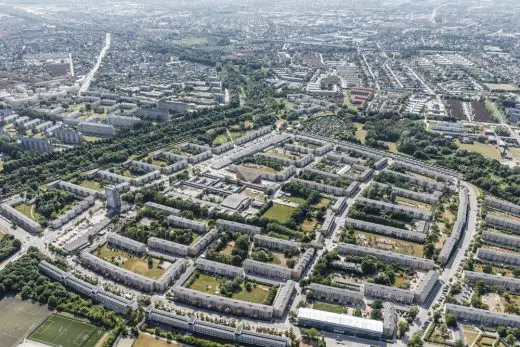
photo : Rasmus Hjortshøj – COAST
Tingbjerg Library and Culture House
Dortheavej Apartments, Copenhagen
Design: BIG – Bjarke Ingels Group
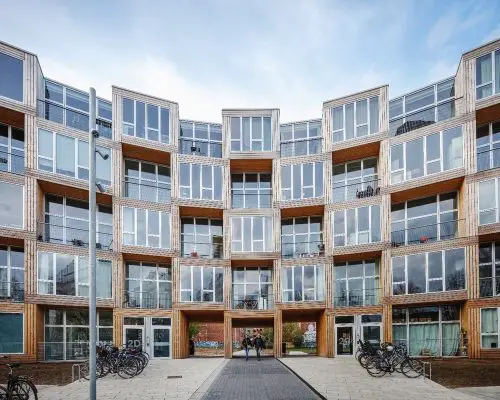
photo : Rasmus Hjortshoj
Dortheavej Apartments in Copenhagen
Comments / photos for the Karen Blixens Plads in Copenhagen page welcome

